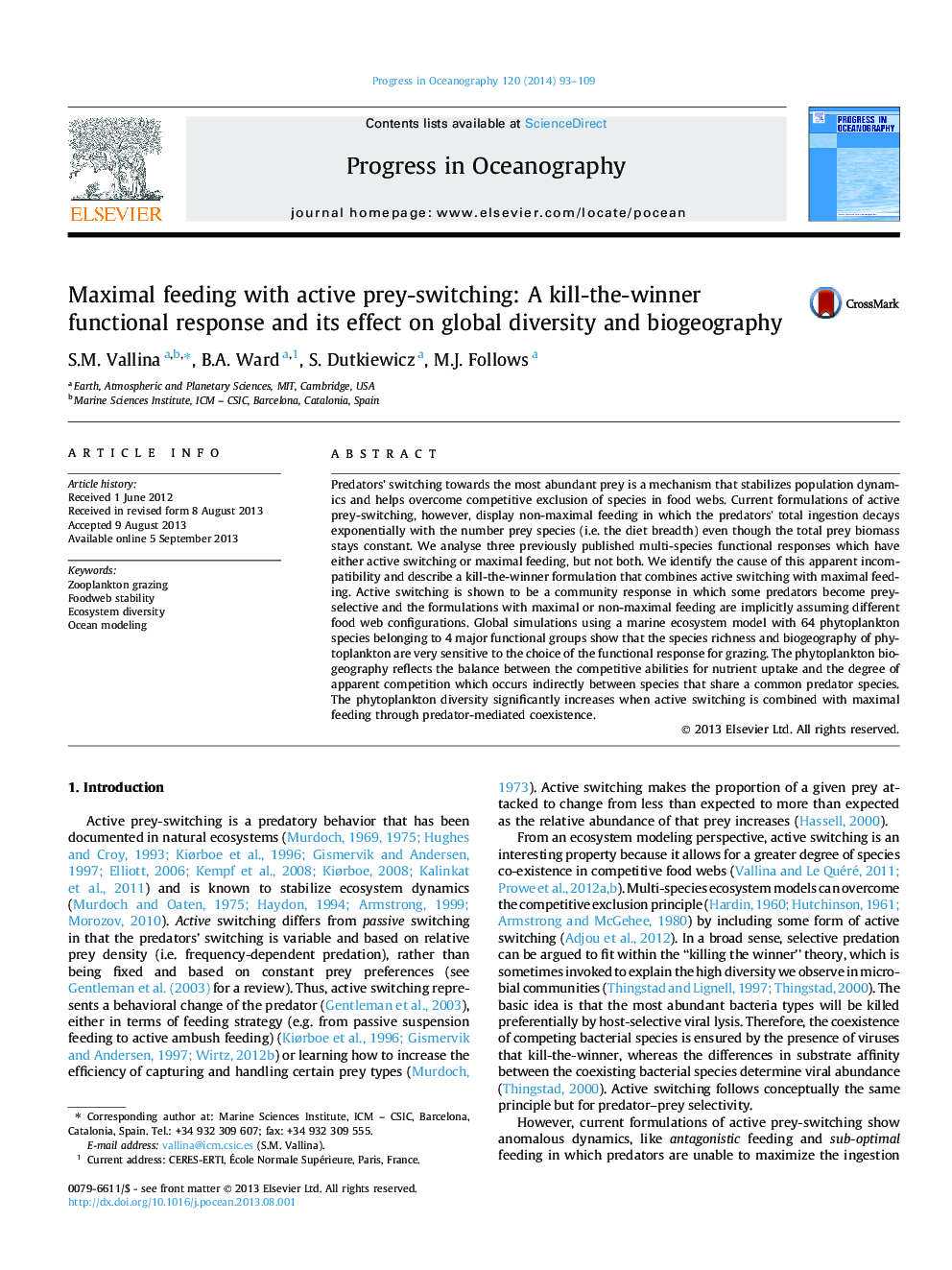| Article ID | Journal | Published Year | Pages | File Type |
|---|---|---|---|---|
| 6388654 | Progress in Oceanography | 2014 | 17 Pages |
Predators' switching towards the most abundant prey is a mechanism that stabilizes population dynamics and helps overcome competitive exclusion of species in food webs. Current formulations of active prey-switching, however, display non-maximal feeding in which the predators' total ingestion decays exponentially with the number prey species (i.e. the diet breadth) even though the total prey biomass stays constant. We analyse three previously published multi-species functional responses which have either active switching or maximal feeding, but not both. We identify the cause of this apparent incompatibility and describe a kill-the-winner formulation that combines active switching with maximal feeding. Active switching is shown to be a community response in which some predators become prey-selective and the formulations with maximal or non-maximal feeding are implicitly assuming different food web configurations. Global simulations using a marine ecosystem model with 64 phytoplankton species belonging to 4 major functional groups show that the species richness and biogeography of phytoplankton are very sensitive to the choice of the functional response for grazing. The phytoplankton biogeography reflects the balance between the competitive abilities for nutrient uptake and the degree of apparent competition which occurs indirectly between species that share a common predator species. The phytoplankton diversity significantly increases when active switching is combined with maximal feeding through predator-mediated coexistence.
